Horseshoe crabs are an example of creatures that inhabited our planet some 230 million years ago. They have not changed a bit over time. They can be easily recognized by their straight rigid tail and hard shell that reminds of a military helmet.
Horseshoe crabs live primarily in shallow ocean waters of Southeast Asia and the Atlantic coast of North America, at a depth of 10-40 meters. Sometimes they can be present in the estuaries.
Horseshoe crabs are closely related to crabs and even spiders. Their body divided into two sections (prosoma shaped like a horse shoe and opisthosoma) can be up to 60 cm long. The cephalothorax and abdomen are protected by the greenish-gray color carapace that is perfect for camouflage. The front edge of the carapace is pointed.
The horseshoe crab has 6 pairs of appendages. The first pair of pedipalps is used to clasp onto the shell of a female during spawning. Five pairs of walking legs allow the horseshoe crab to easily move along benthic sediments, pushing and clearing away sediments as the crab burrows into marine bottom and moving food towards the mouth.
Horseshoe crabs have 4 eyes to help them find mates and sense light.
Horseshoe crabs absorb oxygen from the water using gills, each containing about 150 leaf-like membranes (lamellae). The grills are located under the abdomen.
They feed on worms, mollusks, crustaceans and even small fish.
These amazing crabs swim upside down.
They are commonly used as bait and in fertilizer.
Horseshoe crabs have hemocyanin and not hemoglobin in their blood that contains the copper. Thus these crabs have blue blood which contains amebocytes used to make Limulus amebocyte lysate that helps to detect bacterial endotoxins.

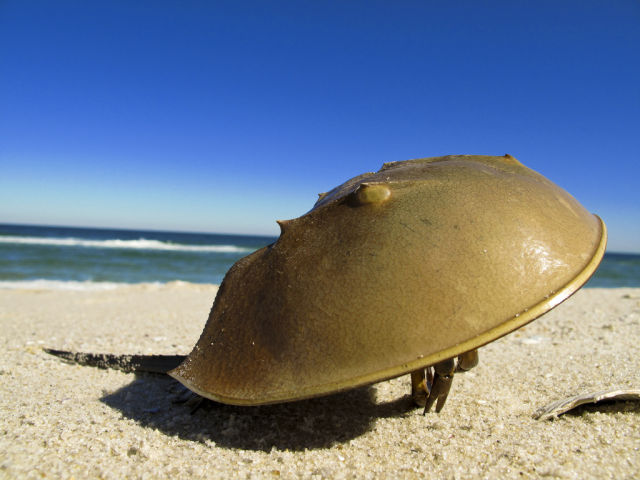
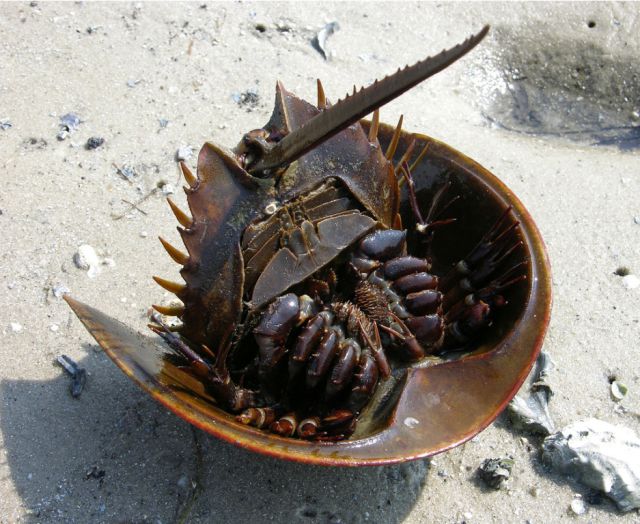
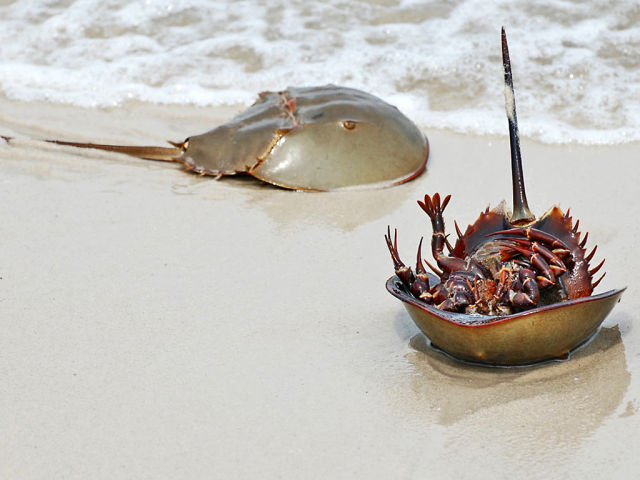
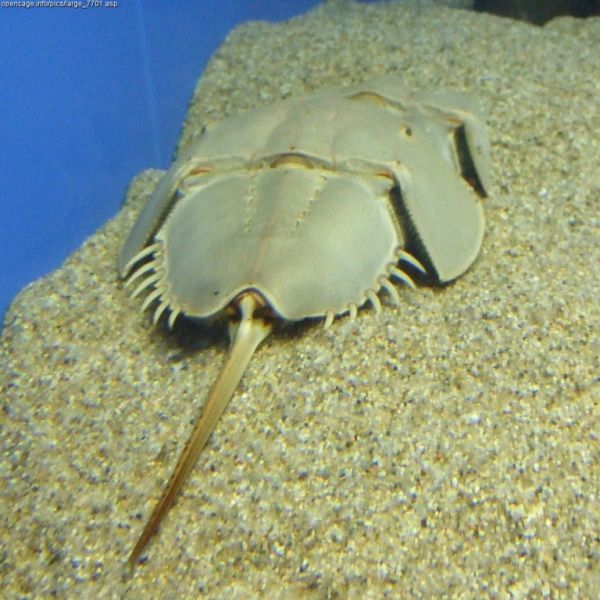
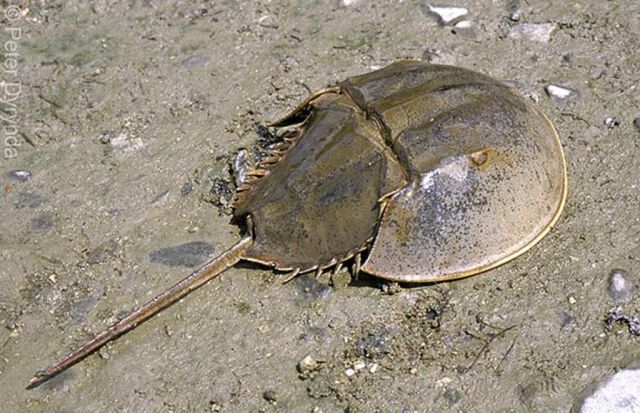
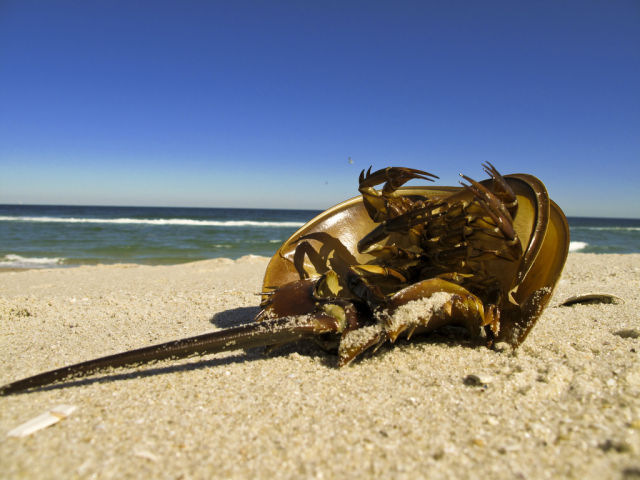
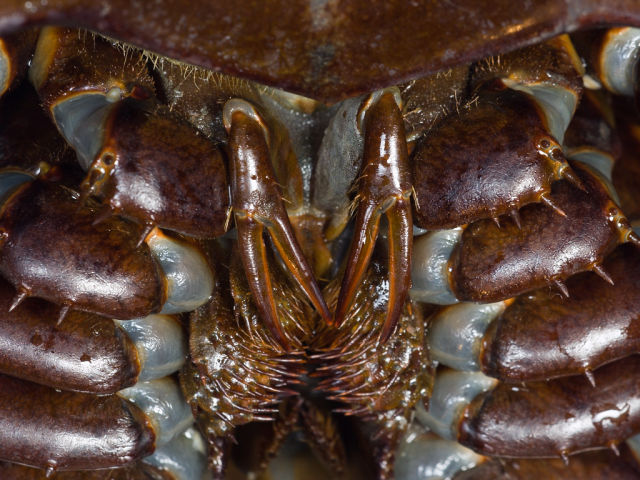
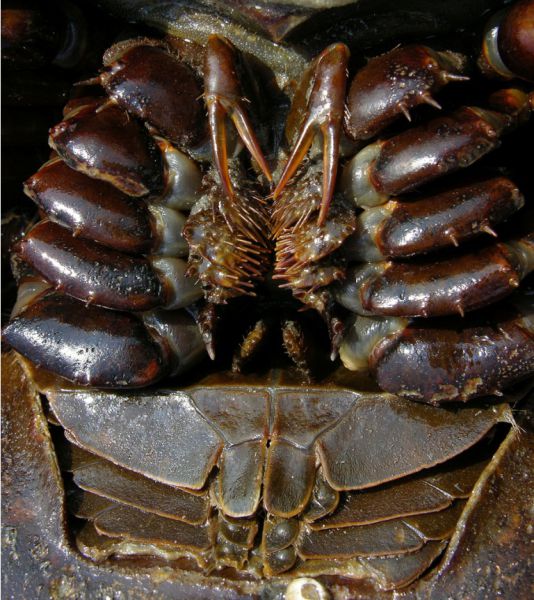
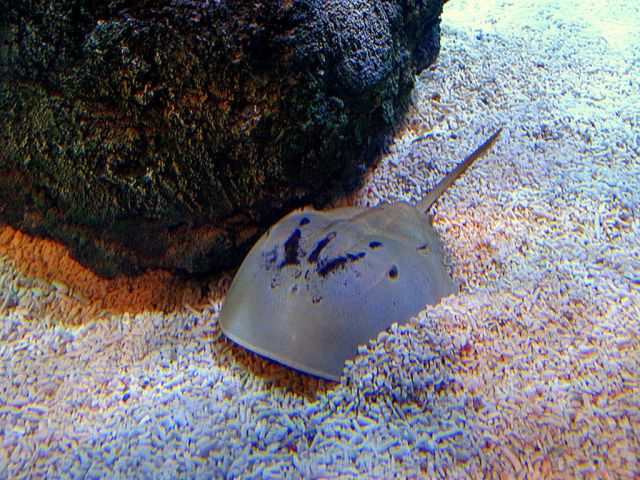

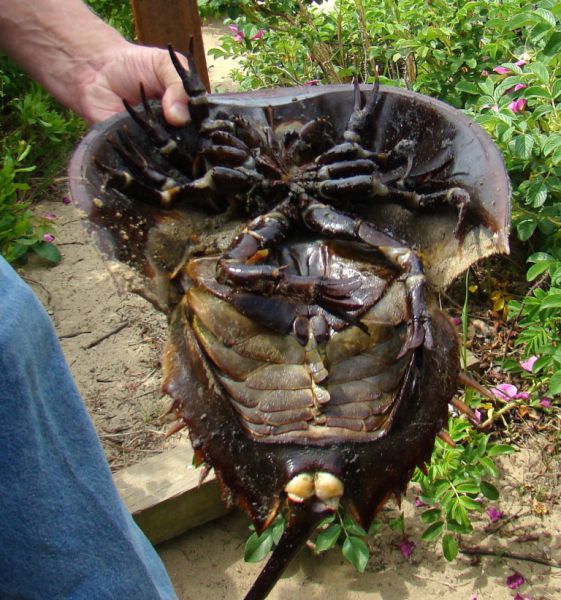
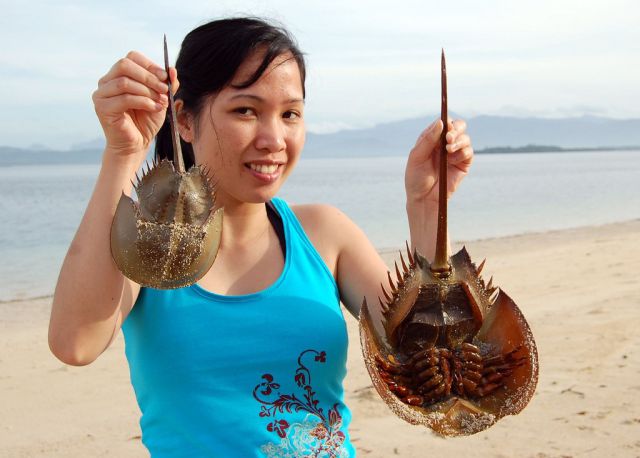
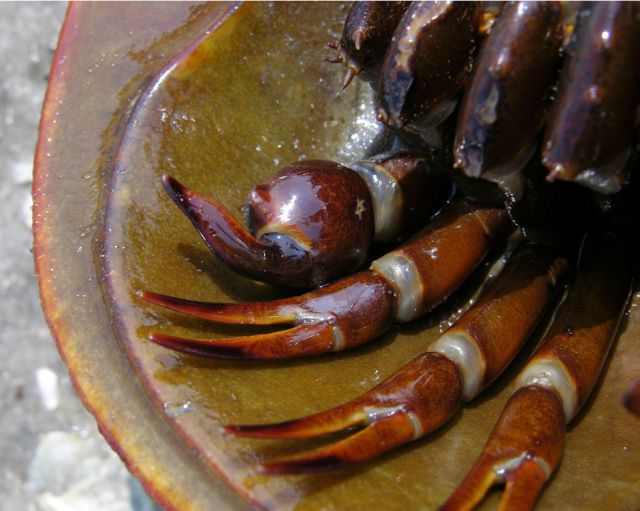
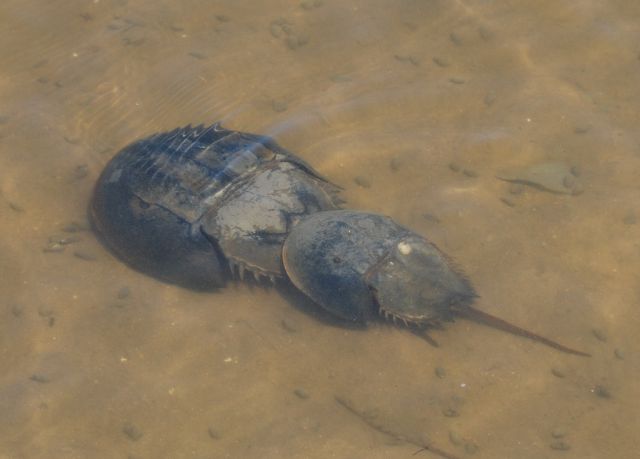
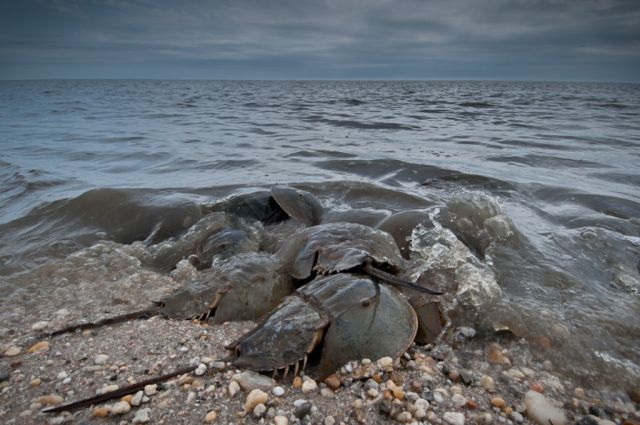
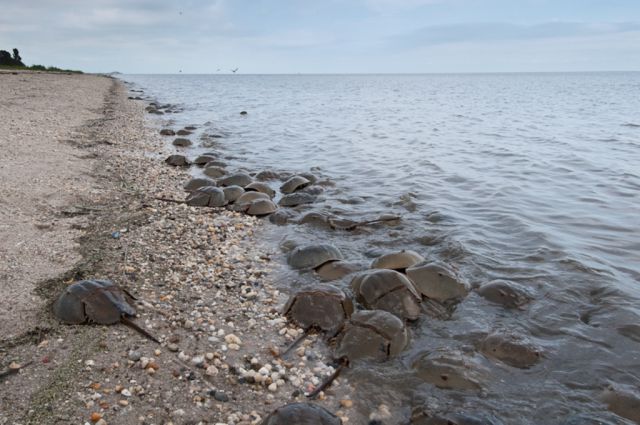
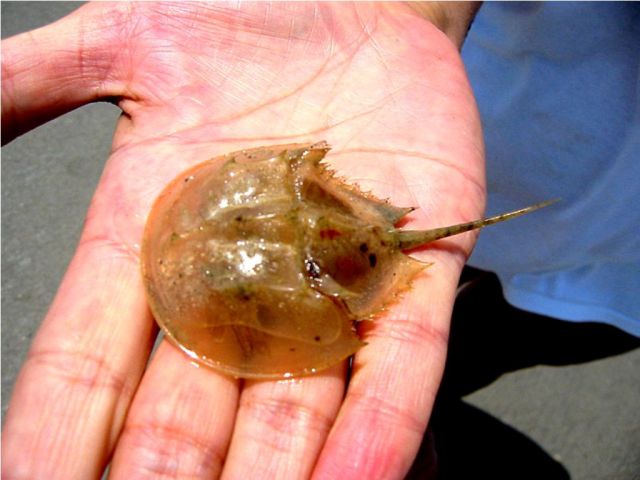
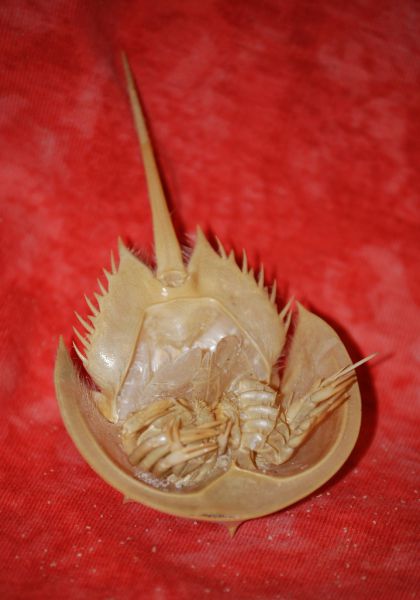
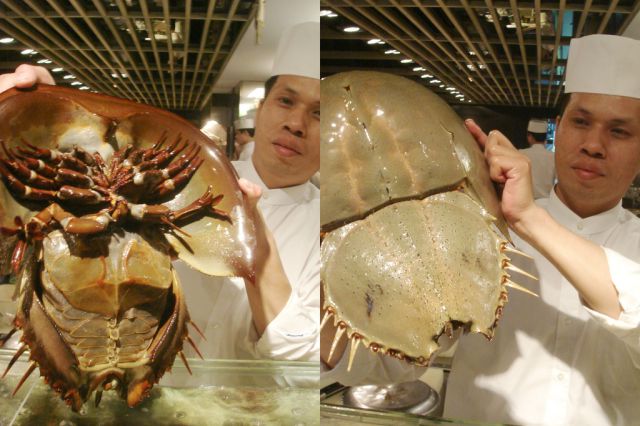
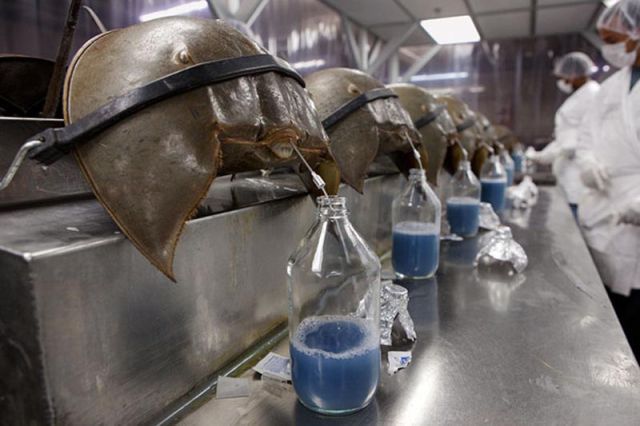



used to be my pet...
In all seriousness though. The last photo makes me sick.
incorrect. horseshoe crabs are not crustaceans at all and in fact are more closely related to mites, spiders, scorpions, etc.